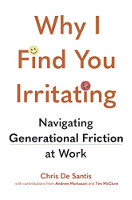
Image by Victoria_rt
“I remind young people everywhere I go, one of the worst things the older generation did was to tell them for twenty-five years, ‘Be successful, be successful, be successful’ as opposed to, ‘Be great, be great, be great.’ There’s a qualitative difference.” -- Cornel West
Our distaste for work is not inherent. Some people are satisfied and even excited about the work they do—it’s just that many are not. There are a number of reasons for this: a bad boss, lack of challenge, inability to advance or achieve promotion, difficult working conditions, a lack of respect, and many other factors.
There are as many reasons to be unhappy with work as there are workers. However, the vast majority of these reasons can be reduced down to their ultimate result: a lack of worker engagement.
The workforce is suffering a disengagement crisis. This is not a uniquely American problem. In fact, the United States does better in terms of self-reported engagement than most other developed nations. But we are still failing to keep workers engaged.
In 2020, Gallup noted 54% of workers were disengaged and nearly 14% were actively disengaged. These workers cost companies real money because they are vocal about their unhappiness. It shows in their work and can drag other workers down as well.
Conversely, engaged workers are those who are enthusiastic about work and committed to the job. They come to work excited and are eager to get—and stay—involved. They are active participants in the success of a company. It is no exaggeration to say that engaged workers carry an organization almost on their own, which is remarkable when you consider that only one in three employees are engaged.
These disengaged workers are not necessarily bad workers. They just don’t find their work engaging. People aren’t born “engaged” or “disengaged.” It is mostly a matter of circumstance.
Being in the Right Role at Work
Jim Clifton and Jim Harter, authors of It’s the Manager, make this point: “The biggest single factor impacting the long-term success of a business is the quality of the managers.” What seems to matter to employees today is what is happening to me, the worker, in the here and now. And the manager clearly plays an outsized role in this equation.
As such, it is critical that management and the C-suite work with employees to ensure that they are in the right roles. Workers need to know what they need to do, understand why they are doing it, and believe that they are learning and growing. The very best employees are always going to be the ones who choose to be where they are as opposed to feeling that they have to be there. Having options makes workers feel like they have more control over their destiny.
A bad boss and poor management can even negatively impact enthusiastic, positive workers. Caring and supportive management can keep workers engaged in the company and its work. Poor, ill-trained, or hostile management does the opposite. Failing to support employees in doing their job lowers morale, full stop. Low morale does not make for engaged workers.
Showing Up to do the Job
We workers have continued to show up and do the job, engaged or not. This is a tale as old as business itself. What is new is how young workers are now reacting to this status quo. As a boomer, I always accepted this Faustian bargain: I show up and do what I’m told, you pay me. Work is work, right? This is just how things are?
When I was working at companies, I would never have deigned to push the envelope. I certainly complained to my colleagues and they to me. (On the bright side, shared misery is a bonding experience.) But we still did what was asked of us. We complied. We weren’t necessarily satisfied or engaged, but we did the work anyway. Well, we met the minimum requirements, at any rate.
From Compliance to Commitment
Moving from simple compliance to commitment requires engagement. But what is engagement? It can be a vague term. Essentially, engagement is a function of how well a worker’s talents match the requirements of their specific role.
We all have different interests, passions, and preferences when it comes to our work. Certain workers are simply better suited for certain sectors, companies, and roles. While it is true that workers naturally gravitate toward sectors and jobs that interest them, as we tend to study and pursue that which aligns with our interests, the realities of the job market often result in workers making compromises about where they work. We will not all land a dream job pursuing our passions.
We aren’t all fit for all roles. I started out studying architecture in college. While I loved architecture, architecture didn’t love me. So, I moved into accounting instead. Unfortunately, accounting didn’t add up for me either. By the time I graduated, I was majoring in marketing.
I was on my third degree before I discovered that my true interest was in how organizations worked, and, more specifically, how we work in organizations. That was the right fit for me; other roles that I tried out were simply not as engaging to me.
This was college, though. When I entered the workforce, I joined a company and complied. Young boomers didn’t think much about finding deep meaning in our work. We needed to find a job. We applied for jobs that sounded interesting at companies that seemed exciting.
However, in the midst of a job hunt, many workers, then and now, are forced to accept the first reasonable offer that comes our way, whether the job is a good fit or not. People need to pay their bills. People need a steady revenue stream.
When A Job Isn’t Engaging
When a job isn’t engaging, however, workers become dissatisfied. Without proper support from employers to help find them a more suitable role, many young workers simply look elsewhere. This is exceedingly common in the modern transactional workplace.
When young millennial workers are unhappy with their job or boss, they may simply leave. This is very common. According to Gallup, six in ten millennials are open to new job opportunities at any given time. One in five millennials has hopped jobs in the last year.
While boomers are quick to dismiss millennials as flaky for this behavior, these young workers are actually being entirely rational. Why would they stay in a role that doesn’t suit them, working for a boss that doesn’t support them?
Millennials hop jobs in pursuit of what Herminia Ibarra, author and professor of organizational behavior at the London Business School, called “match qualities,” which are aspects of jobs that align with a worker’s talents, skills, preferences, and interests. This is perfectly reasonable behavior and actually good for the overall economy.
Companies should be happy that workers are looking for jobs that suit them well. This has been one of the positive impacts of the transactional labor market. The ability for workers to seek out roles that match their personal qualities makes the workforce more efficient and the economy stronger. Companies perform better when employees are well suited to their roles.
This raises the question: In a transactional labor market where workers are free to hop from job to job in search of better “match quality,” why are so many American workers so disengaged at work?
Unfortunately, the blame (and the onus) often falls on employers. Many companies fail to accurately evaluate and develop their workers in ways that encourage success and, ultimately, engagement.
In order to understand how this happens, one must understand lopsidedness.
The Lopsided Worker
We start with certain talents that make us naturally good at some things, not so great at others. The gap between our strengths and weaknesses becomes further delineated over time as we pursue interests, education, training, and on-the-job learning.
Any improvement on our weaknesses is often far outpaced by the growth in our strengths. We hone the skills that we are good at and enjoy doing. Our skill sets eventually become our own, but the uneven development of skills makes us ever more lopsided as we advance. This is completely natural and merely the inevitable outcome of focusing on and enhancing our natural innate talents rather than committing to the development in areas where we initially struggled.
Raw talent will only take you so far. Desire is what drives the commitment needed to turn talent into honed skill. Nature can give you a head start by way of talent, but nurture is how we develop strengths and eventually, even, how we achieve greatness, even if we weren’t so good to start with. Lopsidedness, in this case, is a sign of personal growth and improvement. It is the prioritization and investment in what you think best defines you.
Millennials and Gen Zers want to be treated with humanity and respect from the get-go. They want to exercise and develop their skills in positions that play to their strengths. They want to work for management that recognizes their contributions and values their opinions.
Employers that recognize these desires and work to slot workers into the right roles, treat them right, keep them engaged, and nurture their development will build the strongest teams and most profitable organizations.
Do What You Enjoy, Enjoy What You Do
Helping workers develop their strengths will help them become engaged, but it will not happen overnight. Engagement is difficult for many young workers because they are still in the discovery process. Older millennials have a clearer sense of themselves, and thus a clearer sense of their strengths, weaknesses, and interests as they have had a variety of experiences and opportunities to develop them.
Gen Z might have inclinations and interests; but for something to become a strength, proficiency and practice are required. These young workers may still need time to develop their talents.
In his book Flow, Mihaly Csikszentmihalyi defines “flow” as total immersion in an activity. In a state of flow, the doer is one with the doing. It is a state of complete and total engagement. In such a state, work no longer even seems like work. Flow is the ultimate work-life balance—it is the complete and total integration of work and self.
If we could remain in a state of flow at all times, a debatable notion to be sure, all of the challenges associated with the concept of work-life balance would be moot. Work would just be another engaging (and even pleasurable) activity, not so different from leisure or pursuing hobbies. There would not be any need to balance work against the rest of life—it would simply be another, fully-integrated aspect of life, rather than something to be endured or withstood until it’s time to go home.
While doing something engaging, humans do not dwell on what they would rather be doing. They actually become part of the doing.
For some people, this is more or less a sustainable reality. Some people find their jobs totally engaging. Many people find at least some parts of their jobs satisfying. As a public speaker, I enter a state of flow when stepping onto a stage and speaking to a friendly and engaged audience . . . or, at least, I imagine they are. I get so involved in speaking to my audience that everything else disappears into the background. It becomes just the audience and me. I am totally immersed in that moment. I can only hope the feeling is mutual.
It is fun and rewarding. I can hardly call it work. It really doesn’t feel like work. Much of my time working “on stage” is the most enjoyable and engaging part of my professional journey. This is the part of my work I am most likely to wax poetic about with others. When I get up on stage, I enter a state of flow and time disappears as I become one with what I am doing.
This doesn’t happen for everyone, not right away. The more seasoned among us forget what it is like to be a beginner. This is one reason why boomers struggle to understand why younger workers are so disengaged. Seasoned professionals often advise the young to “do what you love.” While sound advice, the people offering it forget or fail to realize that they themselves are coming from a place of mastery and, hopefully, contentment.
With experience and focus comes mastery. We get better at things the longer that we do them. Mastery begets satisfaction. We are more likely to love that which we have embraced, mastered, and conquered.
Seasoned professionals grow to love what they do. When they advise the young to just “do what you love,” they do so based on insights gained from a lifetime of doing the work. They do so from a place of mastery, in which they can achieve flow and become easily engaged in the work. Engagement is simply easier when you are good at something, and it is easier to be good at something when you have spent countless hours perfecting it.
For the master, the work comes easy, as if by virtuosity. For the neophyte, hard work just seems hard. The struggle can actually be painful and laborious, which makes it much harder to enter a state of flow. “Do what you love” may be well-intentioned advice, but young people need a path toward proficiency and eventual mastery, not platitudes and aphorisms.
This is all self-reinforcing. Proficiency leads to engagement. As we become more engaged, we become more dedicated to further improvement. Employers can jumpstart this cycle and perpetuate it by providing the optimal conditions for their workers.
Engaged workers understand why they are doing something, not just how to do it, because they care about the work. They understand how their work contributes to the greater good. They are developing skills and applying their talents to achieve clear outcomes, which is immensely satisfying.
Help workers develop their skills and encourage growth and improvement. Acknowledge when they are making progress. Encouraging progress helps people move from neophyte to mastery.
The Boomer Tragedy
The potential tragedy of a boomer experience is that so many of them may not be engaged in their work. While some boomers are engaged at work, having spent a lifetime mastering it, others found themselves in the wrong roles. Unfortunately, while ascribing to this “that’s why they call it work” philosophy, they never made moves to find meaningful and engaging work, or never thought it would be allowed or even possible.
They may have not done anything about their situations because they believed that there was nothing to be done. This may be a generational trait unique to boomers. Boomers were raised to see work as a necessity that one does in order to support one’s self and raise a family. While they are free to see the world as they so choose, I would suggest that this perspective is self-limiting. It is also likely to result in unhappiness as one is simply resigned to the status quo.
Furthermore, it is making other people unhappy too. Boomers still run many American workplaces, and if leadership is not open to entertaining the idea of embracing lopsidedness and rewarding teams they will one day be at a competitive disadvantage relative to companies that do embrace these concepts.
In a transactional labor market, where young workers are always free to look for greener pastures, workplaces need to be more adaptive. Thank God for the arrival of our most adaptive generation, Gen X. As they are now moving into senior management positions, Gen X is more willing and able to question existing organizational structures and experiment with new ones.
Copyright 2022. All Rights Reserved.
Printed with permission of the publisher, Amplify Publishing.
Article Source:
BOOK: Why I Find You Irritating
Why I Find You Irritating: Navigating Generational Friction at Work
by Chris De Santis
 Are your colleagues in distinctly different age groups? Are you sometimes baffled or frustrated by their decisions and behaviors? You are not alone. Since the workplace is made up of multiple generations, you are likely to experience generational friction firsthand. But let’s be clear: these are not problems to fix. Rather, they are differences to understand, appreciate, and ? ultimately ? leverage.
Are your colleagues in distinctly different age groups? Are you sometimes baffled or frustrated by their decisions and behaviors? You are not alone. Since the workplace is made up of multiple generations, you are likely to experience generational friction firsthand. But let’s be clear: these are not problems to fix. Rather, they are differences to understand, appreciate, and ? ultimately ? leverage.
In Why I Find You Irritating, by organizational behavior expert Chris De Santis, you'll learn why organizations need to embrace lopsidedness as a way of reversing the commoditization of talent while simultaneously respecting what is unique about each of us. By understanding and appreciating our colleagues, we can reduce friction, increase engagement, and improve both productivity and job satisfaction.
For more info and/or to order this book, click here. Also available as a Kindle edition.
About the Author
 Chris De Santis is an independent organizational behavior practitioner, speaker, podcaster, and author with over thirty-five years of experience working primarily with clients in professional services firms both domestically and internationally. Over the past fifteen years, he has been invited to speak on generational issues in the workplace at hundreds of the leading U.S. law and accounting firms, as well as many of the major insurance and pharma companies.
Chris De Santis is an independent organizational behavior practitioner, speaker, podcaster, and author with over thirty-five years of experience working primarily with clients in professional services firms both domestically and internationally. Over the past fifteen years, he has been invited to speak on generational issues in the workplace at hundreds of the leading U.S. law and accounting firms, as well as many of the major insurance and pharma companies.
He has an undergraduate degree in business from the University of Notre Dame, a master’s degree in business from the University of Denver, and a master’s degree in organizational development from Loyola University.
Visit his website at https://cpdesantis.com/


























